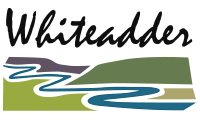The 18th century witnessed a roaring trade in illicit whisky with stills operating in the hills around Garvald, and indeed in many concealed glens across Scotland. The Lammermuir Hills were once famed for their ‘mountain dew’ from illicit whisky stills. After the Union of 1707, taxes on the trade of many luxury items from the Continent caused a smuggling sensation. Goods would arrive on the coasts of the Forth then be transported by men on horseback using the old roads across the Lammermuirs.
Irene Anderson, in her book ‘Garvald – The History of an East Lothian Parish’ (1991), describes a colourful local character with a double life. One well-known local cooper, named Robert Neillans, made wooden barrels and other useful items, and sold them at local fairs. The shadier side of his trade was the buying and distributing of illegal whisky from stills (or ‘stells’) hidden in the hills. A few local blind eyes must have been turned as he went about his business.
Around the 1730s, the government built a barracks for soldiers at Baro to clamp down on illegal smuggling and discourage illicit whisky stills. Ruins of the barracks, which housed a battalion of the Royal Scots Greys, can still be seen near Baro farm.

